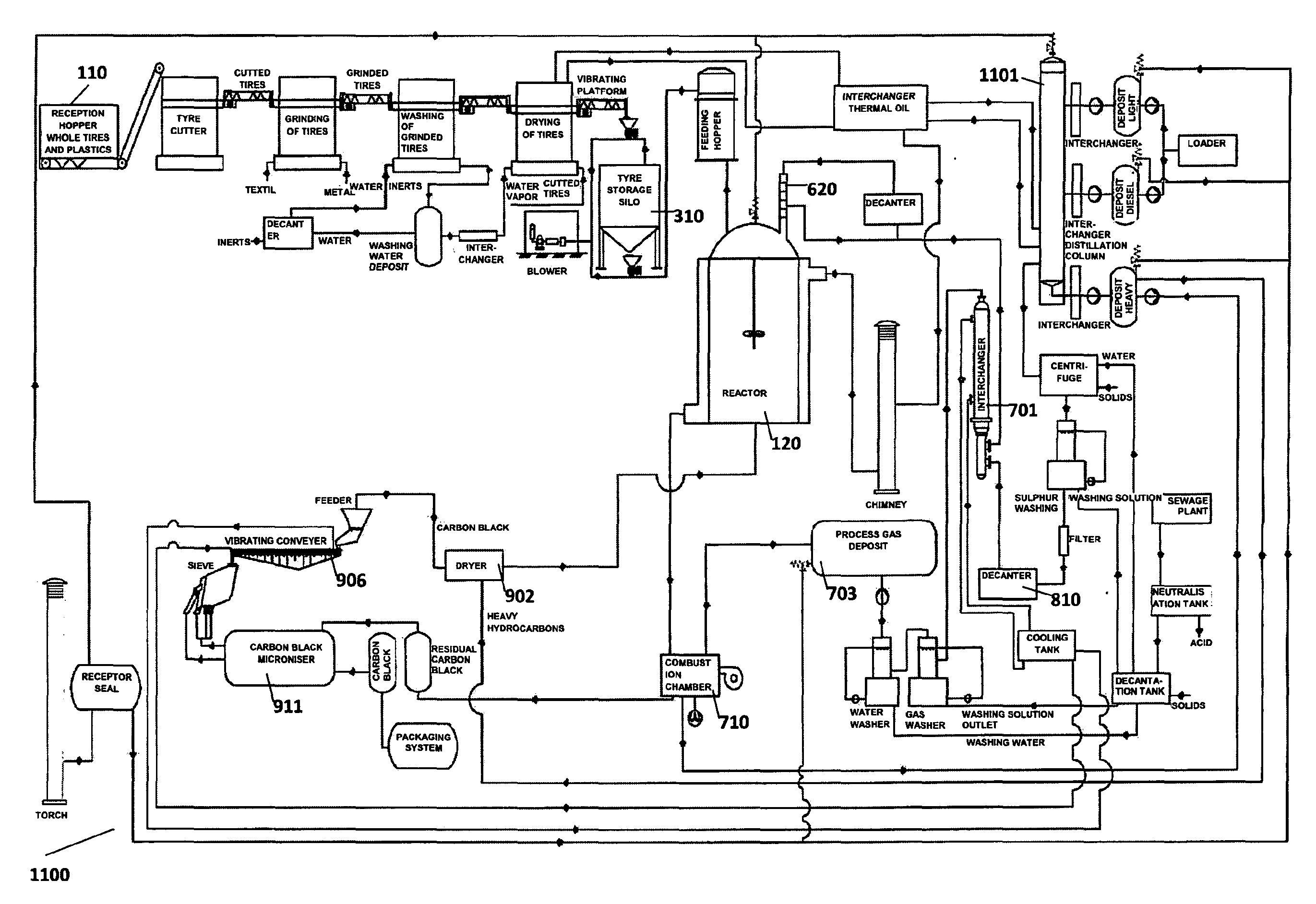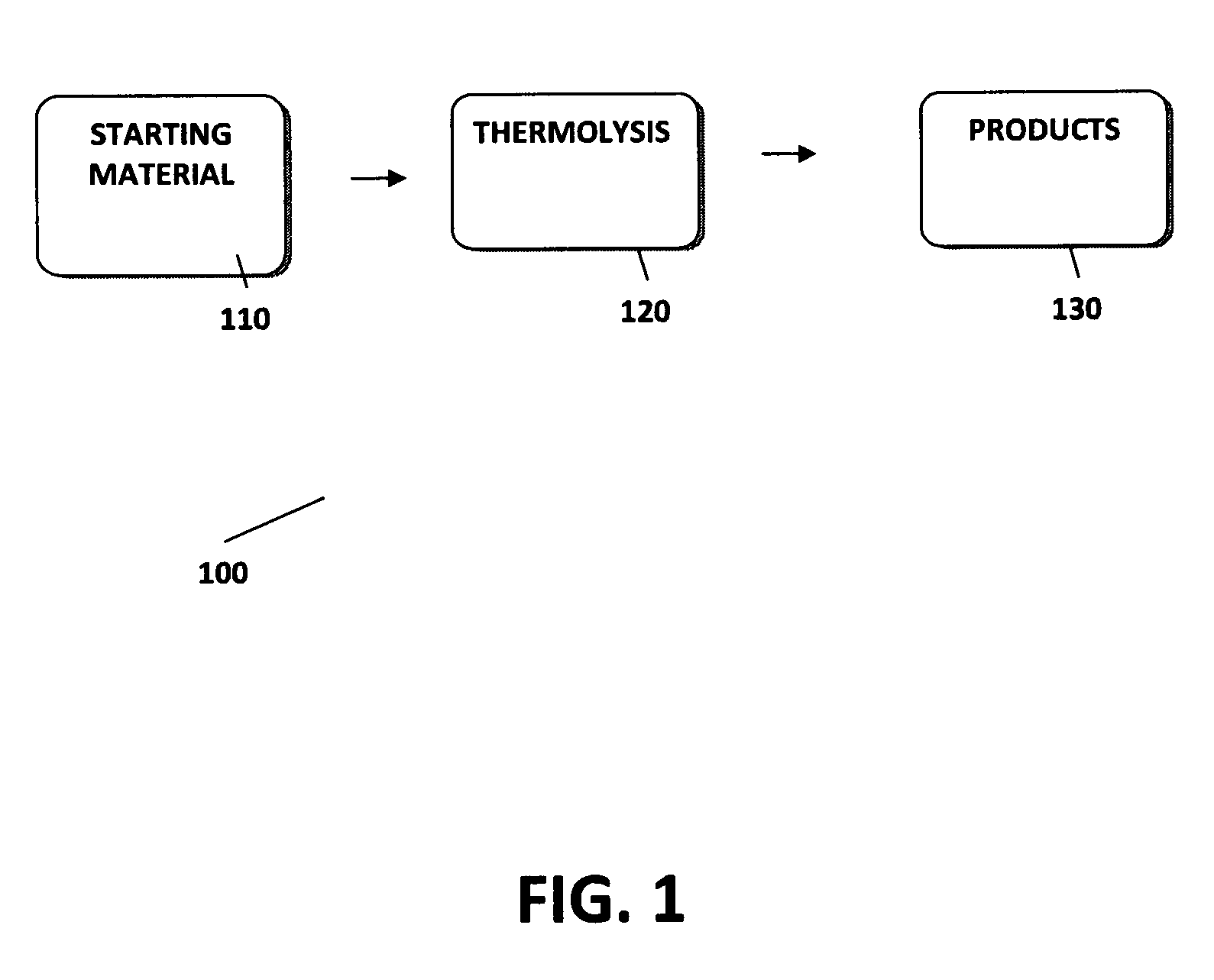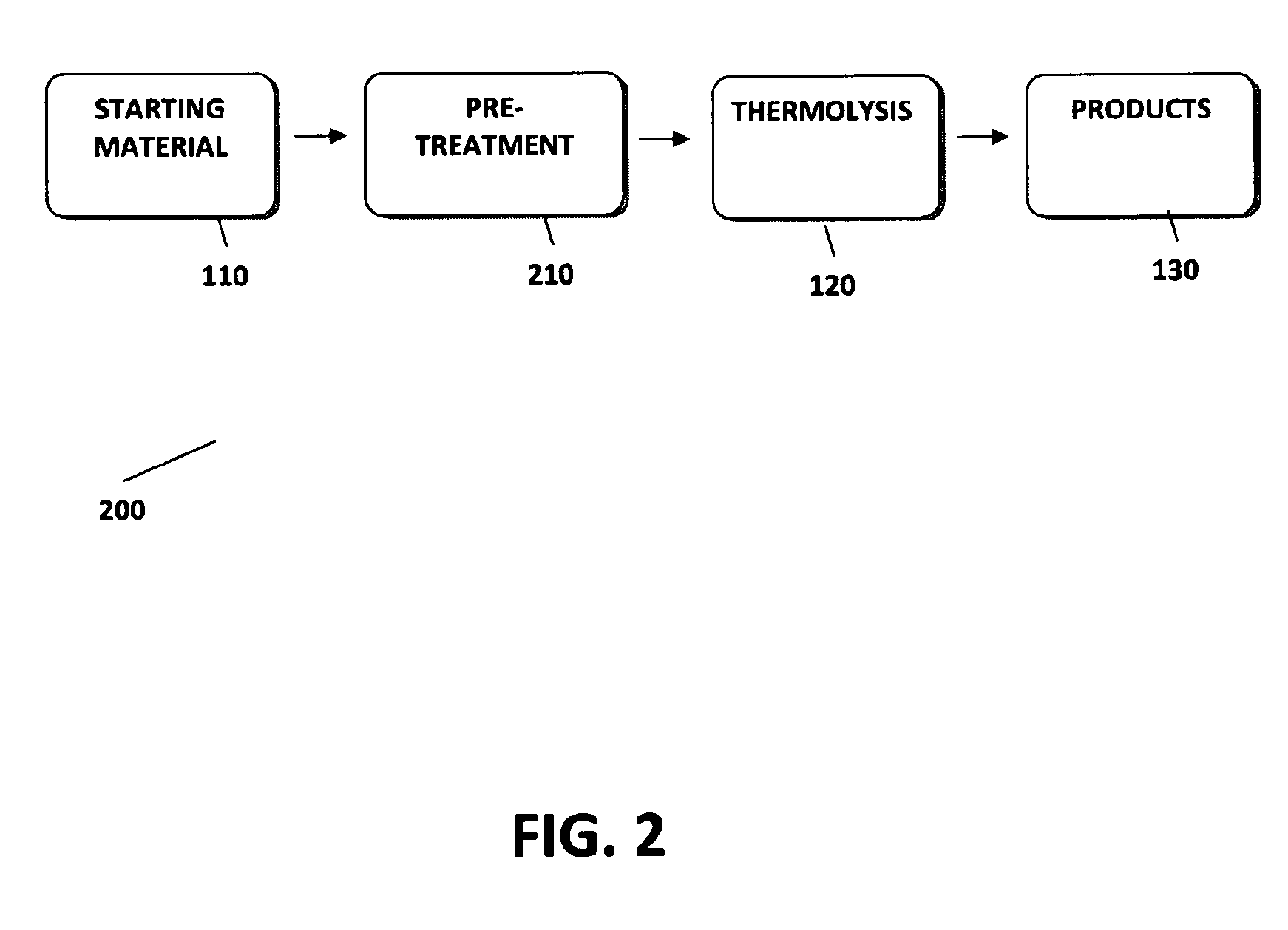Method and installation for complete recycling through depolymerisation
a technology of depolymerisation and complete recycling, applied in the direction of boron compounds, non-fuel substance addition to fuel, alkali metal halides, etc., can solve the problems of high cost, large storage and destruction problems, and consequences that have to be considered, so as to reduce environmental harm, reduce costs, and improve quality
- Summary
- Abstract
- Description
- Claims
- Application Information
AI Technical Summary
Benefits of technology
Problems solved by technology
Method used
Image
Examples
examples
[0108]The following tables show the results of different recycling methods obtained with different starting materials:
% overStarting Material:kgProductskgorg. mat.1. - Thermolysis of a plastic or a rubber without filler: Yield 98%plastic / rubber100gaseous hydrocarbons6.06.1light hydrocarbons87.088.9heavy hydrocarbons4.84.9inorganics (oxides)0.22. - Thermolysis of a filled plastic: Yield 98%plastic filled at 20%100gaseous hydrocarbons7.09.4light hydrocarbons62.082.5heavy hydrocarbons6.08.1inorganics (oxides)23.03. - Thermolysis of tires Yield 98%tires100Metals14.0gaseous hydrocarbons7.08.5light hydrocarbons19.023.1heavy hydrocarbons14.017.1inorganics (oxides)4.0carbon black42.051.24. - Thermolysis of oxidised oils Yield 96%oxidised oils100gaseous hydrocarbons3.03.1light hydrocarbons25.026.0heavy hydrocarbons68.070.1
[0109]As can be deduced from the results of the practical experiments carried out, the method and installation allow advantageously the production of carbon black in a high...
PUM
| Property | Measurement | Unit |
|---|---|---|
| size | aaaaa | aaaaa |
| temperature | aaaaa | aaaaa |
| temperature | aaaaa | aaaaa |
Abstract
Description
Claims
Application Information
 Login to View More
Login to View More - R&D
- Intellectual Property
- Life Sciences
- Materials
- Tech Scout
- Unparalleled Data Quality
- Higher Quality Content
- 60% Fewer Hallucinations
Browse by: Latest US Patents, China's latest patents, Technical Efficacy Thesaurus, Application Domain, Technology Topic, Popular Technical Reports.
© 2025 PatSnap. All rights reserved.Legal|Privacy policy|Modern Slavery Act Transparency Statement|Sitemap|About US| Contact US: help@patsnap.com



